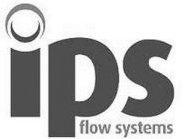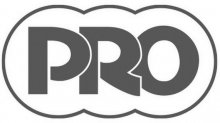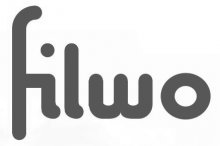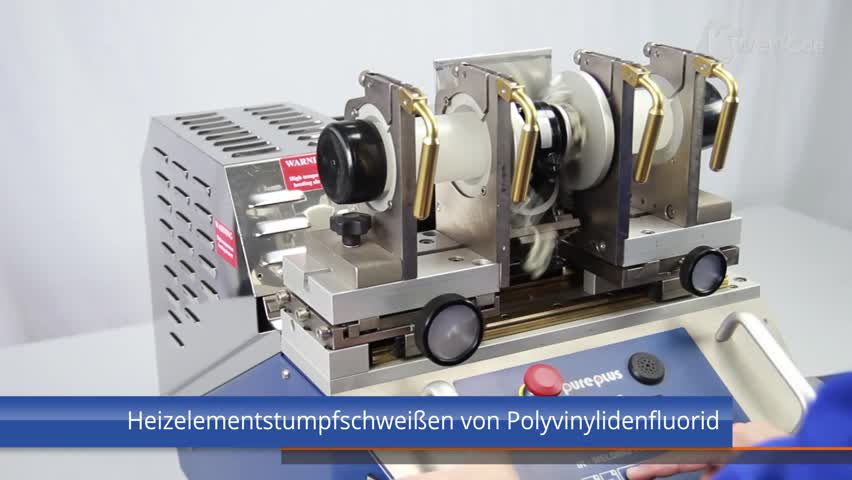PVDF Pipe Systems - General characteristics |
| The company Akatherm FIP GmbH located in Mannheim is a leading provider of PVDF pipe components, with long-term experience in plastic pipelines. Our products and services underlie a strict standard of quality. Besides pipes, extruded fittings for heated tool socket welding, we also offer the different accoutrements needed for the construction of conduits. Flanges, seals and fixing material round off our product range.
The following details were gathered with best knowledge and care. Nonetheless itís not possible to deduce liability from the given information. Polyvinylidene fluoride is a semi-crystalline material. Because of its mechanical properties, its chemical resistance and especially because of its high rigidity, stability and outstanding resistance, even under the influence of temperatures around 0°C, PVDF is a predestined material for the building of plastic pipelines. The high percentage of Fluor (59%) results into a high distortion temperature and therefore into an exceptional long-time rupture strength. PVDF shows its actual advantages in the range of higher temperatures connected with an excellent chemical resistance. Kwerk GmbH reserves the right to modify the details in this publication as products and specifications are updated and improved. The content of this publication is for general information only and it is the userís responsibility to determine the suitability of any product for the purpose intended. For further information on all Kwerk GmbH products and services contact our Customer Services Department as detailed below. Customer Services Tel: 0049 2602 999730 Fax: 0049 2602 9907329 Email: info@kwerk.de |
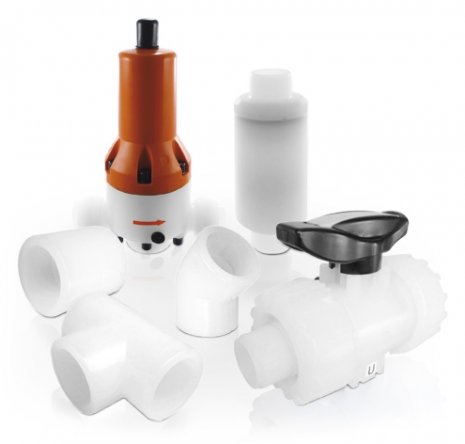 |
Chemical resistancePVDF is resistant to most inorganic acids and salts even under the influence of high temperatures and concentrations. In addition itís resistant to aliphatic and aromatic hydrocarbons, organic acids and alcohols. Strong polar solvents like ketone or esters swell PVDF. PVDF isnít resistant to strong basic amines and for example alkali metals. The chemical resistance depends on multiple factors like the operating temperature, the operating pressure, the concentration and other influences. Concerning information on the persistence of PP against special chemicals you can look up the resistance in our persistence list or contact our product management. |
Temperature- and pressure range of application PVDFPVDF is usable in a temperature range from -20°C up to +140°C. Concerning the pressure capacity of tubes and fittings we refer to the graph under the section Pressure-Temperature-graph. For details concerning the load-bearing capacity of accoutrements please note the additional comments regarding the corresponding accoutrement. |
Electrical propertiesPVDF is a thermoplastic with exceptional isolation properties. Because of the possibly resulting static electricity PVDF canít be used in situations where a danger of inflammation or explosion exists. |
Low weightBecause of its low weight the handling is simplified and new fields of application are developed, in which PVDF can replace metallic systems because of its special characteristics. Like all semi-crystalline thermoplastics PVDF has a relatively high thermic coefficient of expansion (0,12mm/m °C). This fact has to be taken into consideration during the planning of the tube system. There exist several solutions: Installation of an expansion arc or compensators as well as clamping them at fixed points. In order to do this, sound knowledge of the use of plastic is necessary and we recommend to calculate the planned system with the help of a computer program. |
Easy connectionThe welding of PVDF pipe systems allows an easy installation of new systems and an accordingly easy modifying of existing systems. The user has the choice of welding procedures which are admissible according to DVS 2207- part 15: Heated tool butt welding and heated tool socket welding. Regarding the use of accoutrements with butt welding connection pipes for the contact-free heated tool butt welding technology (IR-welding) please confer with our product management. |
NormsThe available tubes and fittings from Akatherm FIP are produced according to the most important national and international norms and regulations. Those include: - ISO 10931 - DIN 3441 - EN 558-1 - DIN 2501 |
Guidelines for thermoplastic welding and project planningThe project planning of pipelines and the linked welding processes, as well as the education of our plastic welders are based on the principles of the DVS-guidelines (German union for welding and similar processes) and follow especially the given guidelines: - DVS 2205 - DVS 2207 ff - DVS 2212 - DVS 2210 ff |
AuthorizationOn the part of our raw material suppliers the following statements are made regarding authorizations/consultancies: - Mould- and bacteria formation doesnít take place on the surface of PVDF compared to glass - The used PVDF-monomers fulfil the expectations in the EU-regulation 90/128/EEC towards materials getting in touch with food - PVDF fulfils the FDA-expectations for material getting in contact with food according to Nb. 21-CFR 1772510 - The British Thames Water Services for pipelines used for the transport of hot and cold water in private households states that PVDF is admissible for this - Tests made by the hygiene institute in Gelsenkirchen confirm the suitability of PVDF for the transport of hot and cold water, on the basis of the plastic drinking water recommendation - TA-air-license for 2- and 3-way ball valve (TA= technical instructions from the german government in order to keep air clean) - TA-air-license for butterfly valve - TA-air-license for diaphragm valve - DIBt-license for 2-way ball valves |
Pipe supportPipes are often installed in pipe clamps which donít hinder their linear expansion. The pipeline has the possibility to slip into the pipe clamp. Therefore the constructions have to be as stable as possible, but they shouldnít hinder the axial movement of the pipe. The metallic pipe clamps have to be free from sharp edges or ridges which might harm the pipe. The space immediately next to the clamp has to be free from obstacles (e.g. fittings, sockets, weld joints) which limit the mobility of the pipeline. When installing pipelines where the pipe itself canít expand, it is necessary to use guiding clamps. They have to guarantee that the pipe doesnít collapse because of the occurring compression. The possibility to slip isnít necessary in contrast to the slipping clamp. |
Support of heavy parts of the pipelineAccoutrements, filters or other heavy parts of a pipeline should always be attached independently from the conduit in order to keep inadmissible loads from the pipeline. For example when flanging in butterfly valves, mounting plates can be used instead of loose flanges accoutrement or for ball valves special ball valve mountings can be used. |
Pipe conductOverhead conducted pipelines should be installed in a way, that enough changes of direction exist, to absorb the expansion or tightening of the pipeline. Through the usage of accordingly designed bending connecting pieces and the fixing methods described above an aimed axial expansion without causing excursion is achieved. In every case the pipe flexibility can be exploited. |
Distances of pipe clampsPipe clamp distances in mm for PVDF tubes with mediums of a density ≤1 g/cm³ |
Optimize your shopping experience with our detailed delivery information |
Partnership at the highest level. |
|
|
|
|
|
|
|









